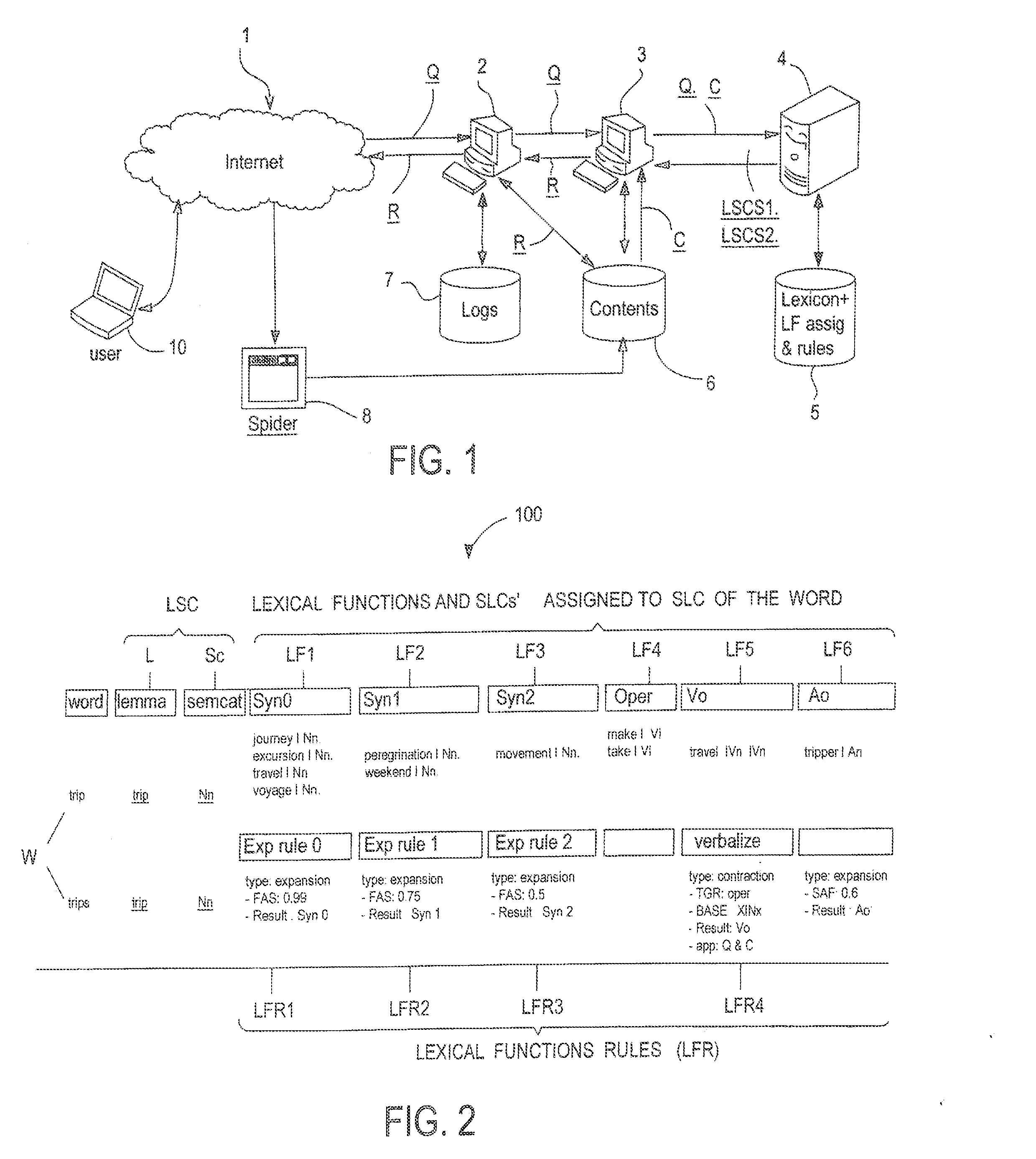Semantic search engine
a search engine and semantic technology, applied in the field of semantic search engine modules for questionanswering systems, can solve the problems of difficult to specify the field or the subject of the search, limit the effectiveness of searches, drawback in distinguishing between polysemous words, etc., and achieve the effect of easy and effective recognition
- Summary
- Abstract
- Description
- Claims
- Application Information
AI Technical Summary
Benefits of technology
Problems solved by technology
Method used
Image
Examples
Embodiment Construction
[0034]The elements designated with numeral references correspond to the parts explained hereinafter.
[0035]In FIG. 1 a technical architecture diagram of the search engine of the present invention can be seen, wherein a user 10 is connected to Internet 1 to achieve a response or result R to a natural language query Q, which is passed to first computer means 2 connected to second computer means 3, which communicates with a lexical server 4. The first computer 2 has a logs' database 7, which stores all the activity on the system, and is connected to an updatable contents' database 6, which in turn is accessible by the second computer means 3.
[0036]Second computer means 3 passes the query Q to the lexical server 4, which converts queries in natural language into semantic representations (LSC1) that combined as a sequence give a global semantic representation (LSCS1) of its meaning, by means of the rules of the Meaning-Text theory (MTT) and through lexicon and Lexical Functions assignment...
PUM
 Login to View More
Login to View More Abstract
Description
Claims
Application Information
 Login to View More
Login to View More - R&D
- Intellectual Property
- Life Sciences
- Materials
- Tech Scout
- Unparalleled Data Quality
- Higher Quality Content
- 60% Fewer Hallucinations
Browse by: Latest US Patents, China's latest patents, Technical Efficacy Thesaurus, Application Domain, Technology Topic, Popular Technical Reports.
© 2025 PatSnap. All rights reserved.Legal|Privacy policy|Modern Slavery Act Transparency Statement|Sitemap|About US| Contact US: help@patsnap.com



